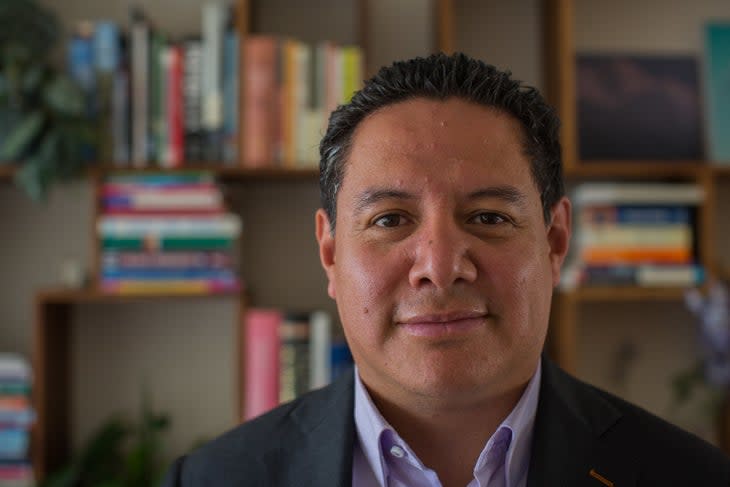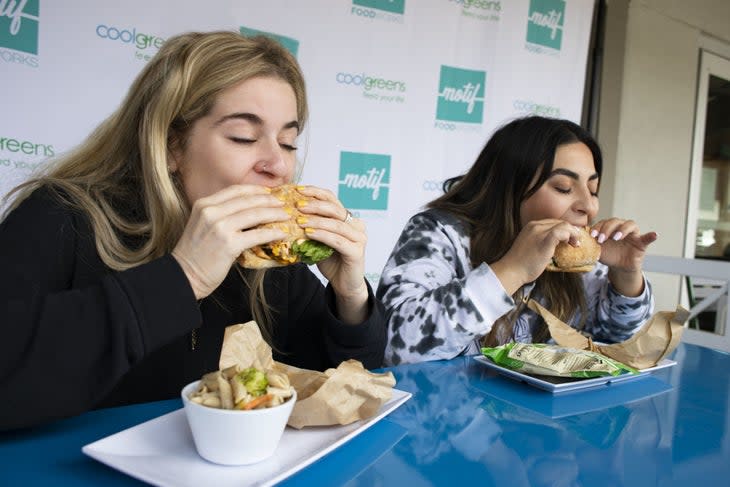What Does a ‘Food Designer’ Do – and How Are They Changing What We Eat?
Lately, it seems like companies are rushing to release plant-based dairy and meat alternative products that make it easier than ever for consumers to reduce consumption of animal products. Behind each of those new products is a long research and development process - including dozens of food scientists. We talked to Cesar Vega, the new vice president of food design at Motif Foodworks about what that process is like, and what we can look out for on the horizon.
Motif is a food technology company focused on perfecting plant-based products. Vega, who has focused on food science since his Ph.D. explains that food technology is how we apply and manifest that science. He used the manufacturing of chocolate as just one example.
"To make good chocolate it requires quite a bit of attention in terms of the quality of the beans, how are they fermented, which has its own biochemical physiological science on its own, how do I toast the beans to give rise to the right flavors, how do I grind the beans that gives rise to how much fat I can get from the beans, and at the end, how do I bring together origin and sugar content and lecithin content to bring forth that pleasurable, 70 percent dark experience," he said. "There is a pocket of science in each of those operations."
Food design, which is Vega's job, brings in the added element of figuring out what it is consumers want - and at what cost. That means deciding on key quality indicators for a new product, like a specific viscosity, color, temperature in the mouth, or cook time. His focus, he said, is to think about the entirety of the personal experience, from the chew and how something cooks, to the more emotional elements that accompany food.
"When you think about the burger you think about the summer, you think about being with your friends in the backyard. I have a beer next to me and the smoke coming off the grill, it's a whole cultural thing," he said. "Can we bring some of those elements to our solutions to make them better as an experience?"
But Vega notes it's also important to pay attention to new and evolving eating habits.
"The number of one- to two-person households in North America has been growing steadily over the last few years, so people eat alone or only with one other person," he said. "That changes how you choose food. That changes how you experience food."
Lastly, a food designer needs to think about how to scale up a product or make it in a factory. Onions, for example, he said, are easy to chop at home. But in a factory, will you have workers crying as they chop three tons of onions?
Plant-based food technology, Vega said, has a couple of big jobs left to do. One is to overcome the history of bad experiences people have with vegan and vegetarian alternatives. Another is to help consumers understand that products that are more sustainable for the Earth might cost more.
"We cannot expect parity when you are bringing a lot more value," he said.
Right now, Vega said, the industry is understandably focused on replicating meat, dairy, and seafood. But he sees a future where vegetables can shine and food technology can help people overcome personal barriers to eat more vegetables.
"I'm very excited about the challenge," he said.
RELATED: Colorado Scientists Discovered a Strain of Mycelium That Flourishes After Wildfires. Now They’re Turning It Into Alt-Meat.
Get more of what you love from VT. Follow us on Instagram, Facebook, and Twitter and sign up for our email newsletters.
For exclusive access to all of our fitness, gear, adventure, and travel stories, plus discounts on trips, events, and gear, sign up for Outside+ today.



